Hydrogen Tram - The Chinese Way for Zero Emission Transport!
Written by Chris Kwacz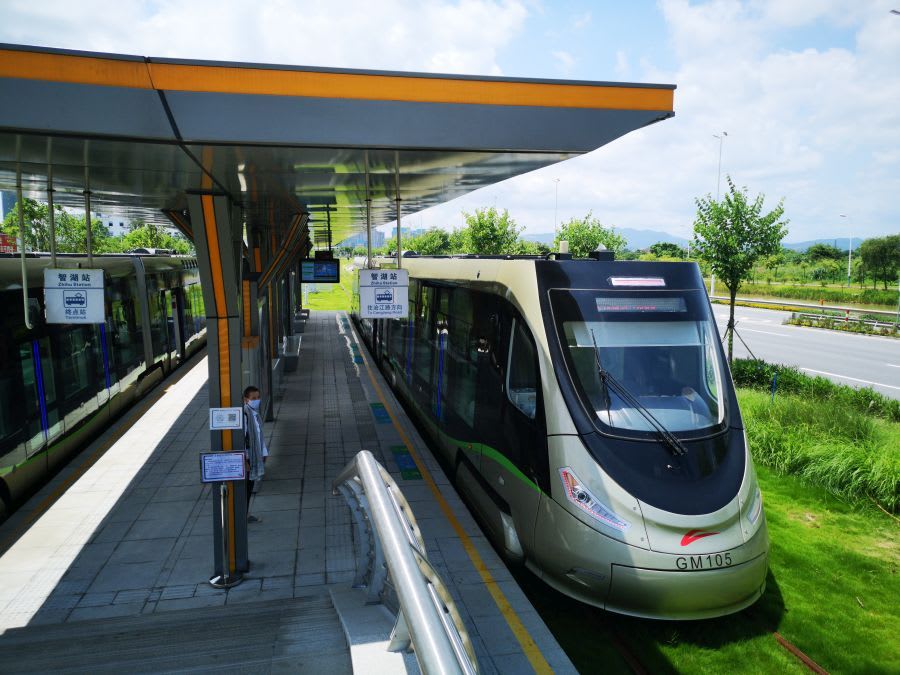
30 December 2019 can be considered as the start of the “Hydrogen Era” in urban rail transport. On that day, the world’s first hydrogen tram line began commercial operation in Gaoming district, the Chinese city of Foshan. CRRC Qingdao Sifang’s representatives agreed to lift the secrecy and told us what the road was to the creation of this vehicle.

As Meet Hydrogen is an International Organization operating in Europe, America and Asia, thanks to our Meet Hydrogen China Team we have the possibility to take a closer look at this amazing Hydrogen Tram project! Paulina Bracher and Doris Dinkel from our Shenzhen office, did an amazing job visiting Foshan several times, doing the research, all photos and providing the possibility to interview the Sifang authorities. Thanks to their work You can enjoy our exclusive report about CRRC Qingdao Sifang H2 Tram today!
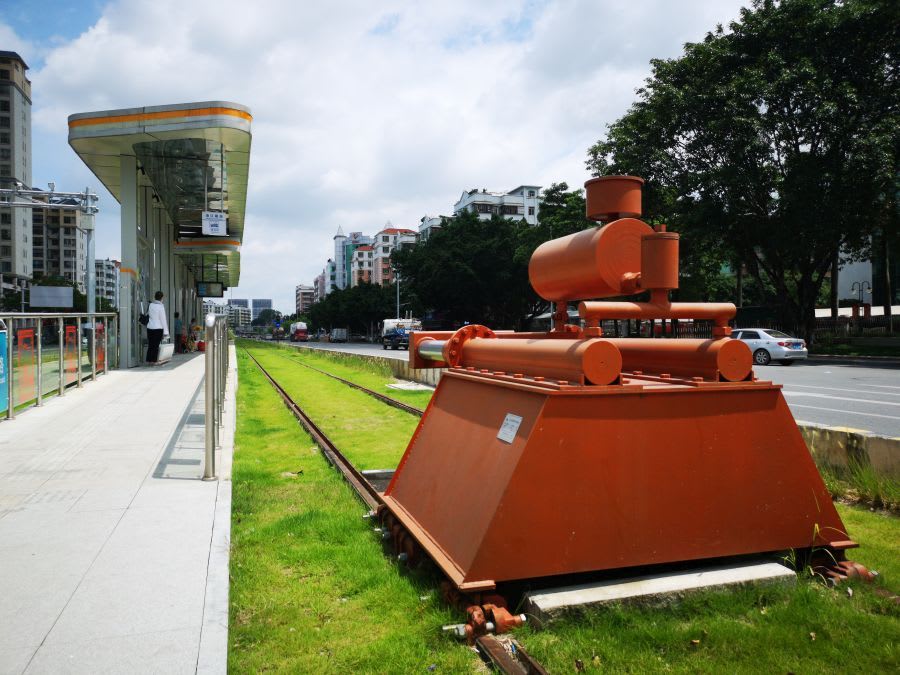
On 22 September 2020, during the 75th At the UN General Assembly, The Leader of the People’s Republic of China Xi Jinping declared that China would achieve carbon neutrality by 2060. Today, the State of the Measure is the largest producer of greenhouse gases in the world, so the completion of this declaration involves a huge investment in transforming the economy and the real implementation of alternative sources of “green” energy. Moving away from fossil fuels to RES requires huge investments in this area. However, the whole process cannot take place without innovative solutions that will reconcile the huge energy demand with zero emission.
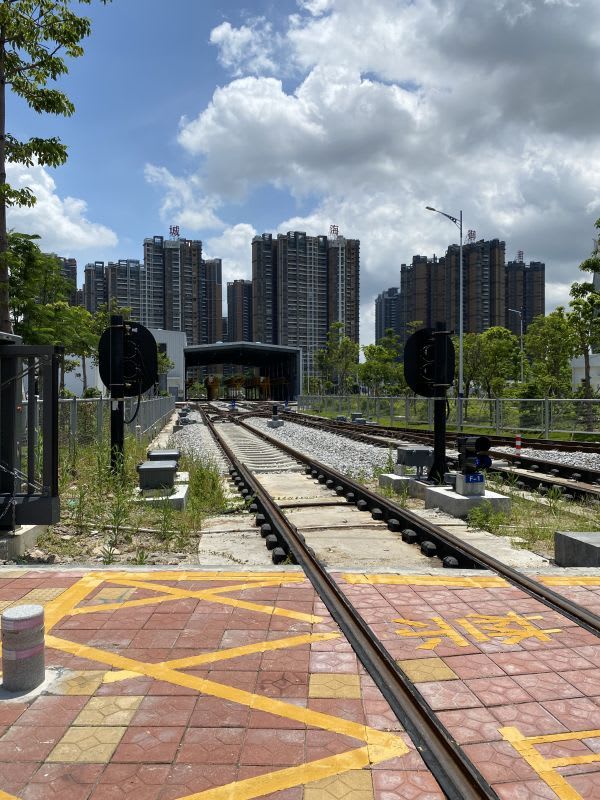
The implementation of “clean” solutions in China is already taking place, and a great example of this is the use of hydrogen, which drives the tram built and implemented for use by China Railway Rolling Stock Corporation (CRRC) Qingdao Sifang. In its fuel cells, during a chemical reaction between hydrogen and oxygen, electricity is produced and only water is a by-product. This energy generation process is equivalent to the reverse process of water electrolysis. The energy generated during the braking process is stored in batteries. In fuel cells, hydrogen is characterized by high efficiency and energy density, and the process itself lacks vibration and, especially importantly, low noise emissions. It should be noted, however, that the main sources of hydrogen are fossil fuel processing processes. Its production is very energy intensive, because it requires huge amounts of electricity necessary in the process of electrolysis, that is, the decomposition of water into oxygen and hydrogen. If we are talking about reducing carbon emissions, this energy must come from renewable sources such as wind farms.
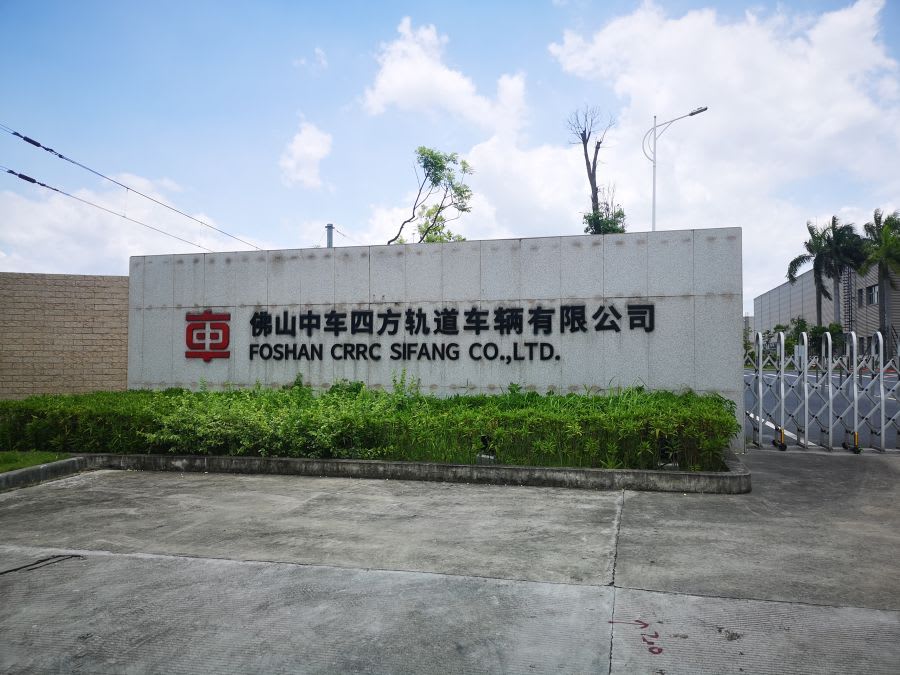
The very place where the Foshan Gaoming Modern Tram Demonstration Line project was carried out, that is, the demonstration line of the modern tram is not accidental. Foshan is a prefecture city in the central province of Guangdong, in southern China. With a population of 7.9 million, it is part of the Pearl River Delta Economic Zone. Its authorities, attaching great importance to creating energy innovation and accelerating industrial transformation, adopted a hydrogen industry development plan in 2018. According to it, by 2030 Foshan should be transformed into an internationally renowned eco-city, using hydrogen energy, expanding its applications and demonstrating the use of hydrogen in different areas of the city’s functioning.
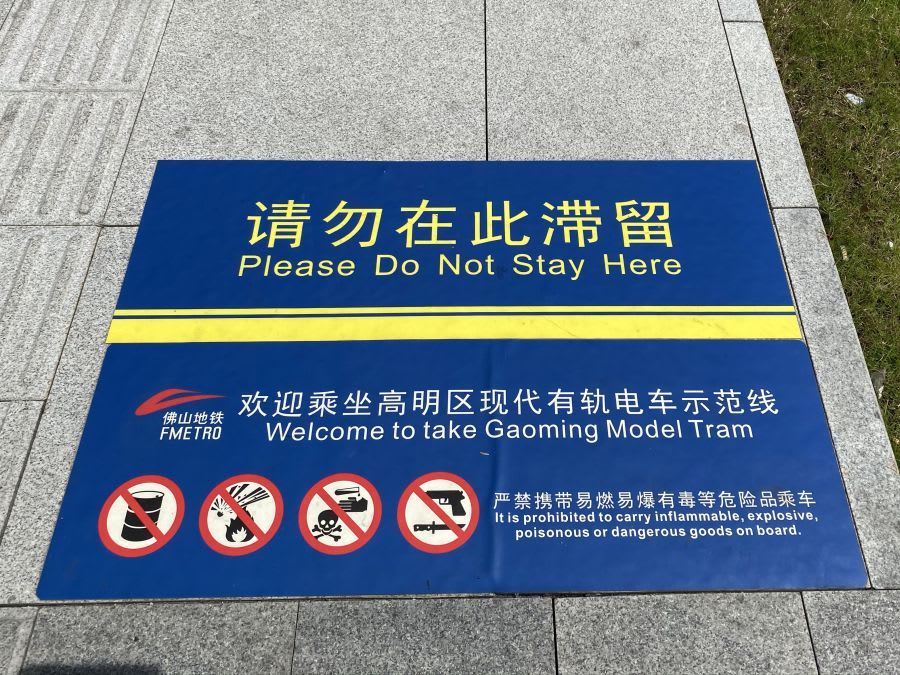
In addition to the obvious ecological value, the possibility of completely abandoning the overhead network opens up a great many possibilities for this project. By reducing the necessary infrastructure to the track, the costs of the entire investment are reduced. In addition, you can run a tram line where it is not possible to install traction or it conflicts with the aesthetics of urban space.
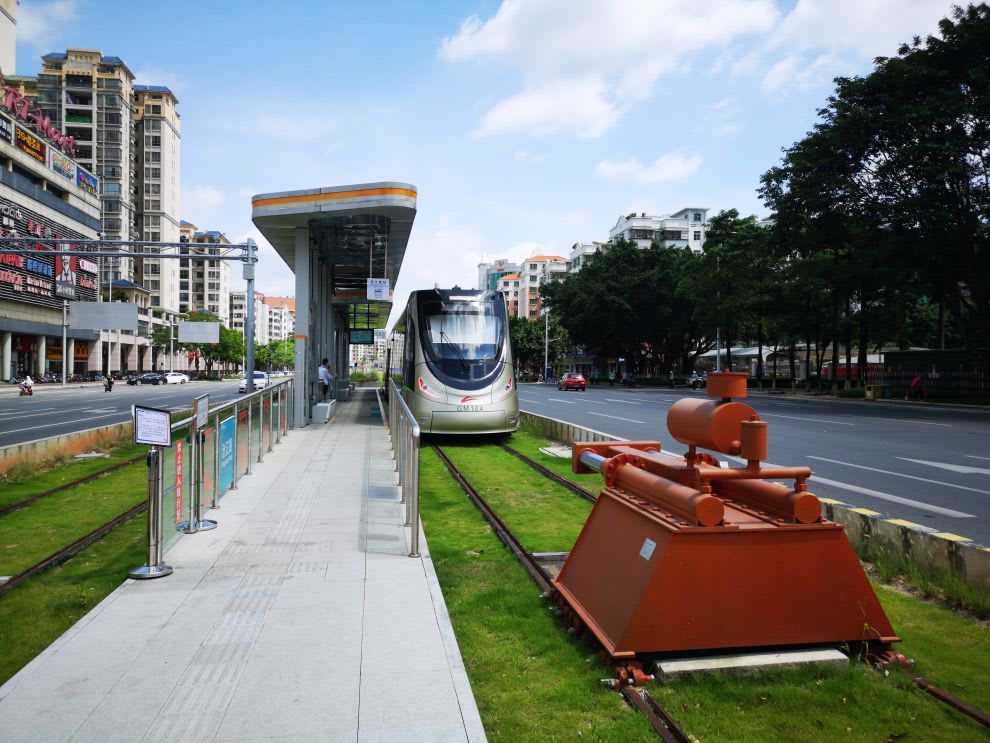
Launched in December 2019, the line was the first phase of the project – 6.9 km (10 stops) with a target of 17.4 km (20 stops). The hydrogen trams running on it are equipped with six hydrogen storage cylinders, which allows you to drive 100 kilometers, and fast and convenient refueling takes about 15 minutes. The vehicles themselves are two-way, three-member and completely low-floor, with a maximum speed of 70 km/h. The tram holds 350 passengers. Their modern design is complemented by panoramic windows.
More information about the vehicle itself was presented to us by its creators, the CRRC Qingdao Sifang:
- The first hydrogen tram is a global breakthrough. What was the path from the idea to fulfilling this commitment?
As a new type of clean energy, hydrogen fuel is one of the main trend in global hydrogen energy exploitation and utilization. As hydrogen tram is powered by hydrogen fuel cells, it is capable of catenary-free operation and present excellent continuous endurance running characteristics. With environment friendly characteristics and zero discharge of pollutants during operation, it provide a brand new solution for the urban traffic.
The company started hydrogen tram research from 2013, with 3 phases in its development course.
From 2013 to 2015, the first generation of hydrogen energy trams, with fuel cell + power battery+ super capacitor energy system, was developed. Through inspection and test on energy storage system, hydrogen power system and the whole vehicle, hydrogen system was successfully installed to vehicle for operation and test. In March 2015, the world’s first hydrogen tram was unveiled in CRRC Qingdao Sifang.
From 2015 to 2016, the second generation of hydrogen tram was created. Compared with the first generation, the second generation was optimized and improved. The output power of fuel cells was improved, energy system configuration was simplified, the configuration of energy storage system was improved, on-board hydrogen storage amount was increased, and the energy management and control strategy was optimize. The hydrogen power system is upgraded comprehensively, and the hydrogen power system safety certification is carried out.
From 2016 till now, the third generation of hydrogen tram, with fuel cell + power battery energy system, was developed. Through ground joint commissioning of hydrogen power system, static and dynamic commissioning, vehicle installation test of hydrogen power system, the tram was inaugurated in Foshan in December 2017. In addition, the company has successively completed the test line assessment of 2000km, the matching assessment of hydrogen power system, and the 20-day trial operation on main line. In December 2019, the tram was officially put into commercial operation in Gaoming, Foshan, the world’s first hydrogen tram demonstration line. In addition, the hydrogen power system has passed the German Rhein, Germany AC, Tianjin Certification Centre For Automotive Products and other safety certification.
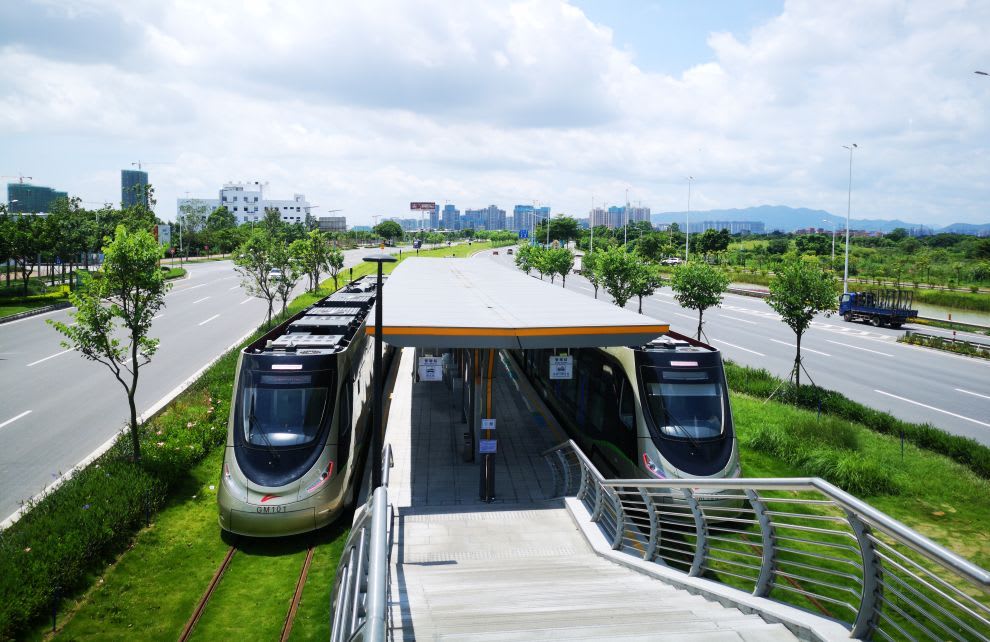
What was the most difficult in this project?
Hydrogen energy technology is faced with various challenges in its initial application to rolling stock:
1) Research on the energy system configuration of hydrogen power system: carry out analysis, test and vehicle installation verification on various configurations before figure out an energy system configuration most suitable for hydrogen trams;
2) System integration technology: provide highly integrated design of hydrogen power system within the effective installation space, and realize the reasonable installation of hydrogen power system;
3) Hybrid energy management and control strategy: meet the requirements of train traction and braking in various working conditions, and realize high energy utilization ratio of the train;
4) Hydrogen storage device design: Create a safe, reliable and stable high-pressure hydrogen storage device to meet the requirements of continuous endurance running.
5) Configuration of energy storage system design: to meet the demands of train high power and high acceleration performance, while improving train fault operation capacity.
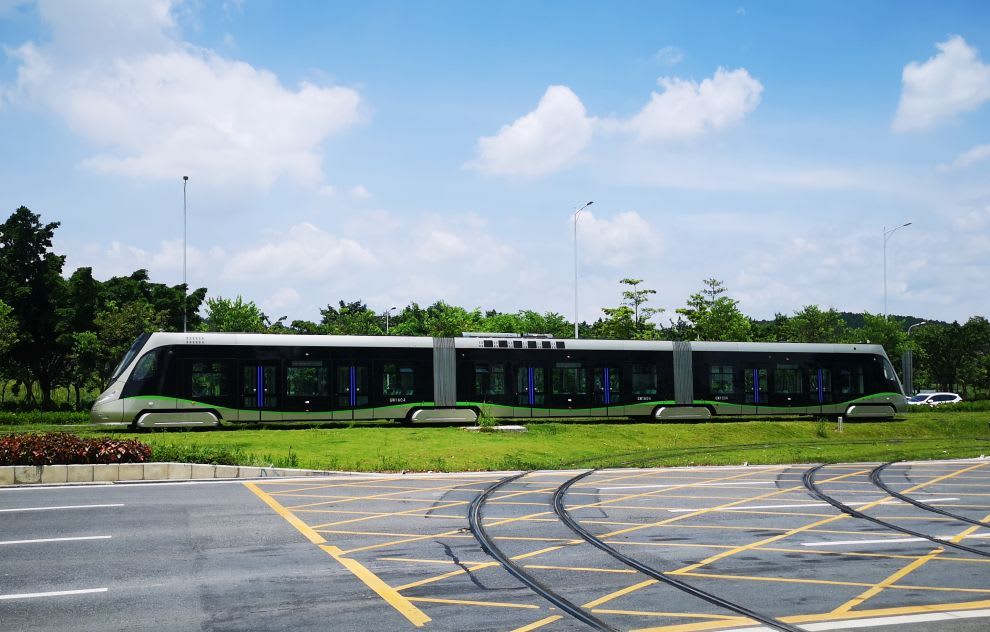
Does the tram have specific infrastructure requirements?
The hydrogen powered trams requires the ground refueling stations for operation, but at the same time, such basic infrastructures as overhead line and substation on the line have been eliminated, so the overall requirements on infrastructures are less.
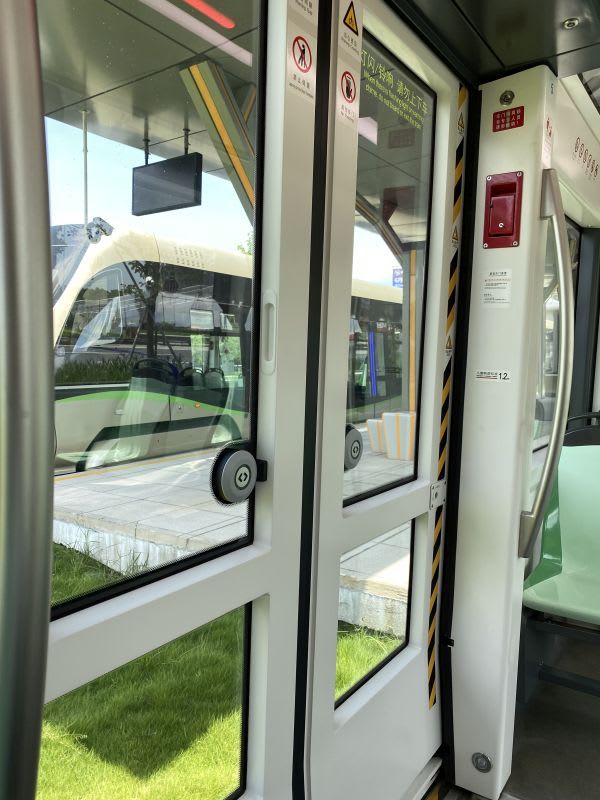
What does her experience look like in terms of both tram production and hydrogen technology?
In December 2019, the hydrogen tram produced by Sifang has been officially put into commercial operation in Gaoming, Foshan, the world’s first hydrogen energy tram demonstration line. The hydrogen power system has successively passed the safety certification, such as German Rhein, Germany AC, Tianjin Certification Centre For Automotive Products .
CRRC Sifang has accumulated many hydrogen energy vehicle experience in the technical aspect.
1) Considering hydrogen characteristics, the installation arrangement of hydrogen leakage detection equipment in the hydrogen power system, hydrogen concentration alarm logic, hydrogen concentration exceeding action response and vehicle linkage control strategy were designed to ensure the safety of hydrogen use.
2) Based on the changeable operating environment of the train, a fuel cell adaptive output adjustment control strategy is formulated. The fuel cell itself can adjust its power output according to external parameters, and increase its fault warning and monitoring functions to ensure the performance of the fuel cell and extend the service life of the battery.
3) Facing the complex and changeable requirements of fuel cell output working conditions, fuel cell is equipped with customized cooling system to ensure the comfortable operating temperature range of fuel cell, stabilize the thermal balance inside the electric reactor, and ensure the temperature control effect of the electric reactor meets the requirements of the tram roof working case.
4) The fuel cell + power cell hydrogen-electric hybrid energy system configuration provides power for hydrogen energy trams. The energy management controller coordinates the working state of the fuel cell, power cell and DC/DC, and controls the real-time power of the fuel cell and power cell according to the driving demand of the vehicle. Considering the contradiction between the durability of the fuel cell and the working condition of the vehicle with frequent acceleration and deceleration, the energy system was optimized comprehensively. The whole energy system is based on network distributed control to realize power distribution and energy management under dynamic working conditions. In the acceleration process, the power is compensated by the power battery. In the braking process, the braking energy is recovered by the power battery, which greatly improves the energy utilization rate of the vehicle. At the same time, the energy management and control strategy is adopted to ensure the power battery SOC within a certain range, ensure the universality of the power battery in the whole working condition, and extend the service life of the power battery.
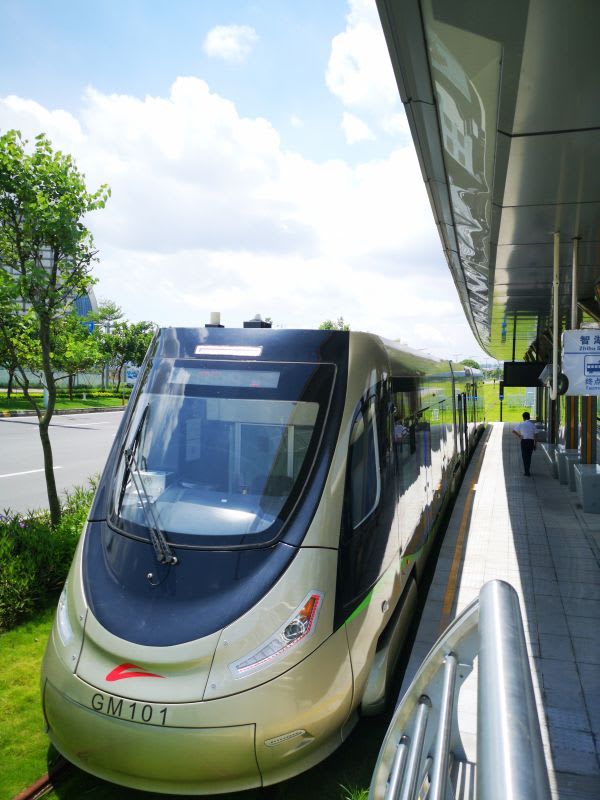
It is known that the tram’s greatest asset is its zero-emission. What other innovative solutions have been used in it? What does it offer for passengers?
In addition to using fuel cell power to achieve zero emissions, hydrogen vehicles also use the following innovative technologies:
1) To jointly design and develop a new type of fuel cell electric reactor for trams to improve the acceleration performance and endurance running capability.
2) Hydrogen fuel cell is configured with efficient one-way DC/DC to realize the fuel cell voltage conversion and output power control;
3) The coupling design of hydrogen storage and heat dissipation is adopted to greatly reduce equipment space, improve the hydrogen reserve of vehicles, and further improve the endurance running.
4) Equipped with large capacity and high ratio lithium titanate battery as the power battery and auxiliary power source to meet the peak power demand of traction braking;
5) Optimize the energy management and control strategy, stabilize the power battery SOC within a certain range, ensure the general applicability of the power battery in the whole working condition, and extend the service life of the power battery.
6) Adopt the new permanent magnet synchronous direct drive motor, the whole set of traction has the advantages of high energy efficiency, high power density and low noise.
7) Develop a multi-network system suitable for hydrogen energy trams;
8) The tram is capable of pure electric operation and strong in emergency and fault operation;
9) Relying on PHM platform, carry out big data life health management;
Passengers:
1) Excellent vehicle stability and comfort: The vehicle has excellent wheel-rail dynamics performance, it can run smoothly and comfortably, bringing passengers excellent riding experience.
2) Good sound and heat insulation performance: The vehicle design adopts performance is excellent, bringing quiet and comfortable space to passengers.
3) High-tech environmental control system, the vehicle is equipped with high-power frequency conversion air conditioning, ensure the vehicle under cold winter and hot summer season provide spring feeling. At the same time, air supply system is also equipped with “light ion” sterilization system, which can effectively remove bacteria and viruses that exist in the air, ensure the safety of passengers respiratory health.
4) Green concept: the “zero” emission of pollutants and greenhouse gases has deeply implemented the “green and environment-friendly” transportation concept and realized the green travel of passengers.
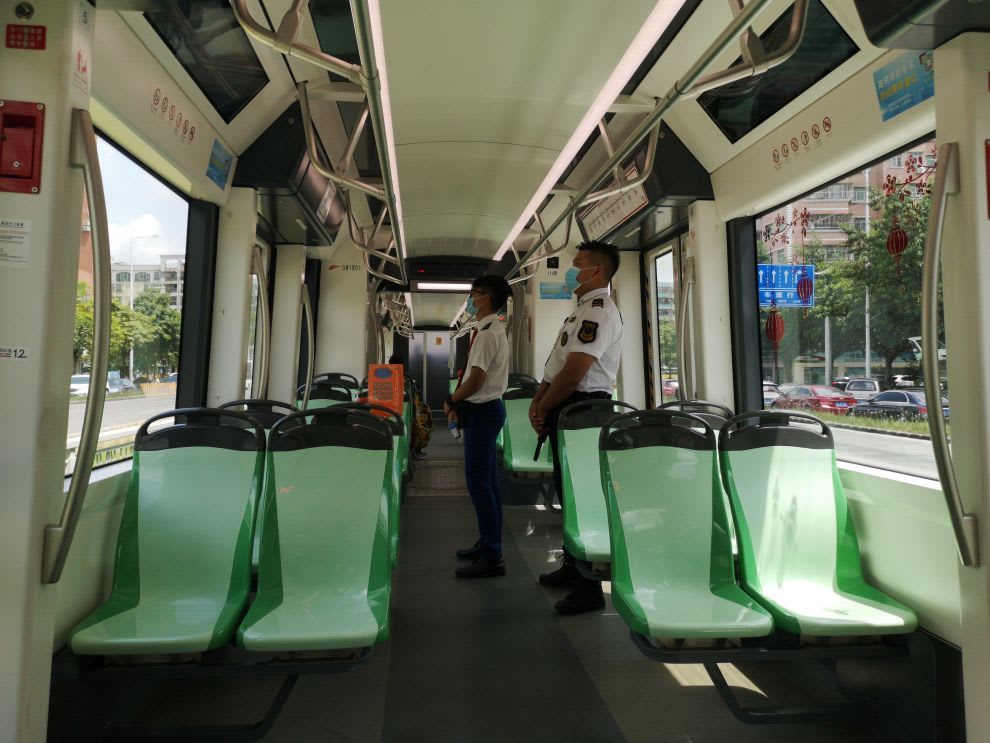
Does the company along with the tram provide adequate facilities for hydrogen storage and refuelling?
Hydrogen energy trams will be equipped with on-board hydrogen storage device and equipped with a hydrogen filling port, which can be used to refuel hydrogen energy trams through the ground hydrogen filling station. The ground hydrogen filling facilities can be professionally supported by hydrogen production and refueling institutions.
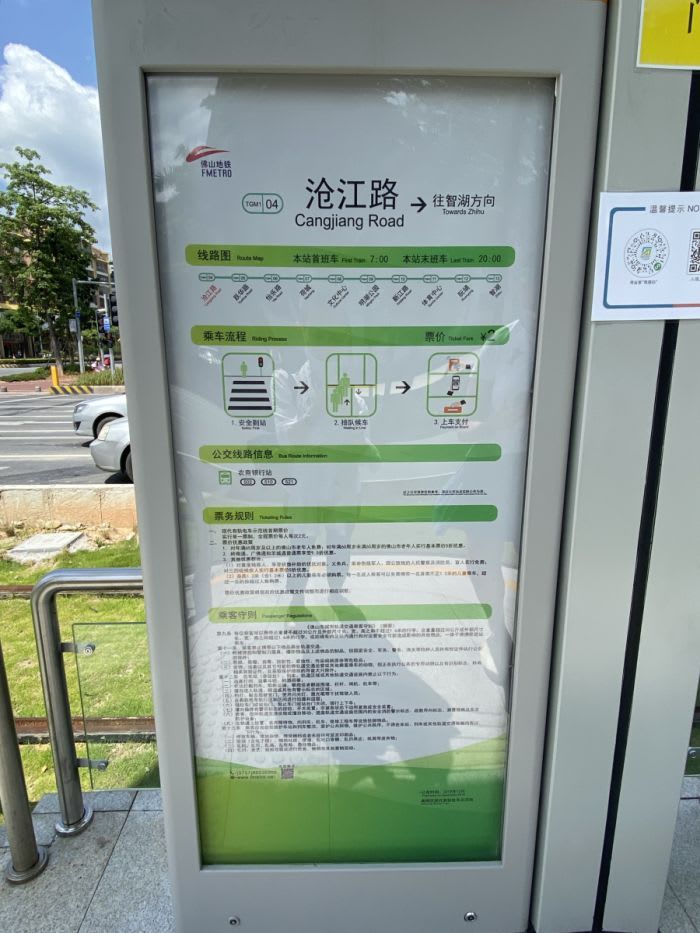
It has been said for some time that China is switching to “green energy”. What does the issue of hydrogen availability look like?
Hydrogen energy is recognized as a clean energy source. It is abundant in sources and easy to burn. Its calorific value is more than 3 times that of gasoline, which can be converted into other forms of energy efficiently. It only output pure water without any harmful substances. As an energy carrier, hydrogen has important applications in various fields such as transportation, industry and construction, and the use of hydrogen energy can significantly improve the flexibility of the energy system.
As an energy storage medium, hydrogen energy can realize the conversion of electric energy to electric energy, the conversion of electric energy to fuel and the conversion of electric energy to fuel, spanning the three fields of electric power, heating and fuel, promoting the integration of energy supply and improving energy use efficiency.
By far, fuel cells are the most efficient way to use hydrogen energy. As a new green energy technology, hydrogen fuel cell could be converted to electricity through electrochemical reaction, its conversion process is not limited by carnot cycle. It is characterized by high energy conversion efficiency, zero pollution, low noise, modular structure, higher power. It can be used as centralized power supply, as well as the decentralized power, it is regarded as a distributed power supply and the most promising green energy in the 21st century.
At present, the main type of fuel cell used in rail transit is proton exchange membrane fuel cell. In most applications, a fuel cell is coupled to a cell or other energy storage device. In this configuration, the fuel cell could serve as the main power source, powering the tram or recharging the battery. The fuel cell for tram has the following advantages:
1) The fuel cell uses renewable energy (hydrogen) to replace electricity and oil, and its reaction product is water without electrical interference;
2) Its line conditions are fully compatible with non-electrified lines and can run on any existing railway lines;
3) Slightly affected by climate conditions, especially in military, disaster and other emergency situations, it has a fast and efficient emergency role;
4) Traditional traction power supply and substation system and catenary system are not required, which avoids accidents caused by the failure of traction power supply system and pantograph network and improves the reliability of train operation;
5) It can reduce the investment of traction power supply system and catenary-pantograph system, reduce the tunnel section and greatly reduce the project cost.
With the performance improvement and cost reduction brought by the technological progress of fuel cell and energy storage system, as well as the further research on energy management strategy, the safety, reliability and economy of hydrogen fuel cell trams will be further improved. The application of hydrogen energy trams will become more and more extensive through the double security of trams and the line, as well as the technology improvement and cost reduction of trams and fuel cell systems respectively.
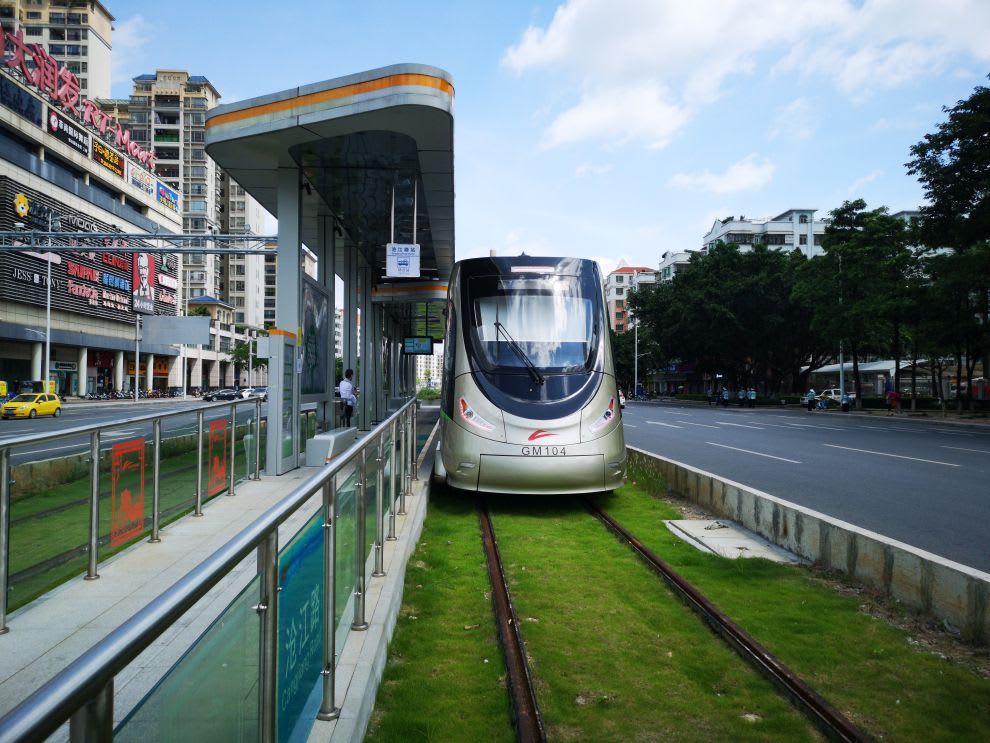
What are the company’s further plans related to the hydrogen tram project?
In the future, CRRC Sifang will vigorously carry out the design and research and development of hydrogen energy trams:
1) Further optimize and upgrade the hydrogen power system to accelerate the application of trams with long endurance and high acceleration performance;
2) In-depth research on energy management and control of hybrid power system, and form a series of hybrid energy management and control strategy;
3) Research on high-pressure hydrogen storage technology to increase on-board hydrogen storage capacity and improve the endurance running mileage of tram;
4) Optimize energy storage configuration and improve regenerative braking energy utilization rate.
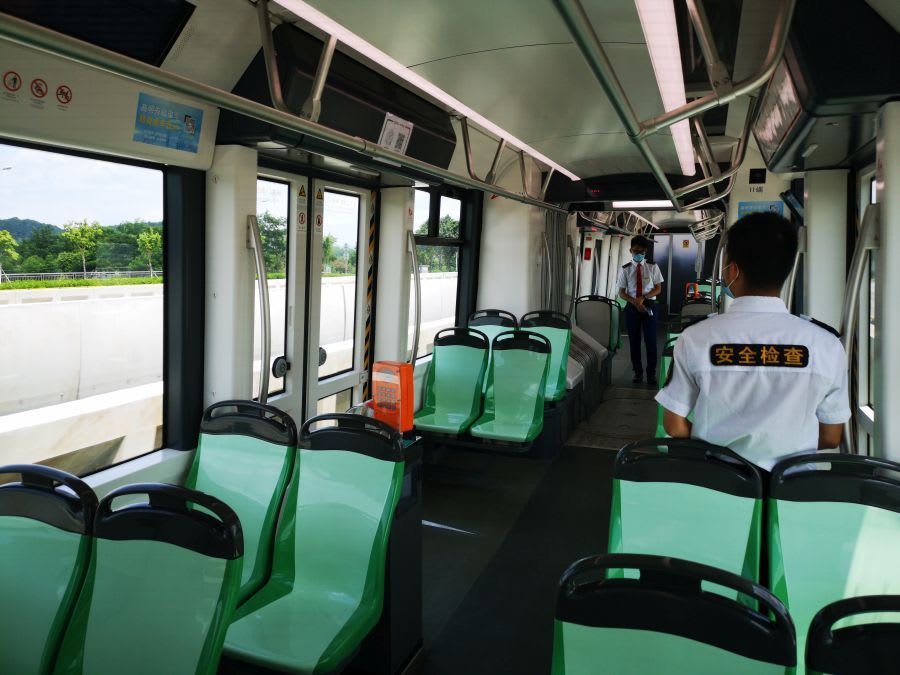
What are the plans for selling the tram outside China? Is there already interest from potential customers?
As a new type of clean energy, hydrogen fuel is one of the main trend in global hydrogen energy exploitation and utilization. As hydrogen tram is powered by hydrogen fuel cells, it is capable of catenary-free operation and present excellent continuous endurance running characteristics. With environment friendly characteristics and zero discharge of pollutants during operation, it provide a brand new solution for the urban traffic.
Governments, operators and manufacturers in many countries all over the world attach great importance to the development and application of hydrogen energy vehicles, and there have been successful commercial operation cases of hydrogen energy vehicles. With the commercial operation and further promotion of hydrogen energy vehicles in China, vehicle manufacturers will gain more and more experience from practical applications and optimize relevant technologies of hydrogen energy vehicles. Sifang is willing to communicate with domestic and foreign groups interested in hydrogen energy technology and actively promote hydrogen energy vehicles.
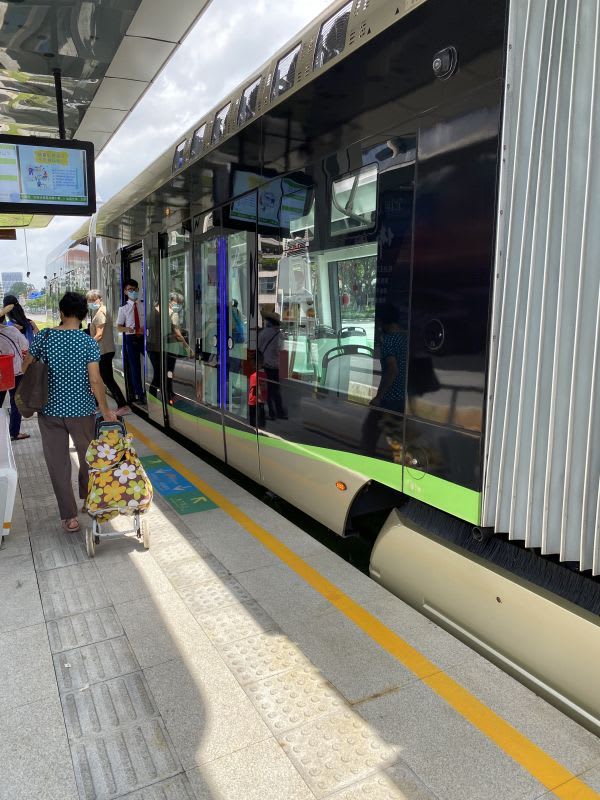
Is it possible to tell something about the price? What is the cost of a tram compared to vehicles with a traditional drive?
Non-contact operation of hydrogen energy trams will not affect the urban landscape, and there is no need to set up charging stations along the way. It only takes 3 minutes for a vehicle to fill up with hydrogen, and it can run for 100 kilometers, which will reduce the overall investment cost to a certain extent.
Credits:
Research, Photos and Sifang Contacts by: Doris Dinkel, Paulina Bracher / Meet Hydrogen
Questions by Tomasz Mokos/ Raport Tramwajowy
The Full Article was already released in “Raport Tramwajowy”